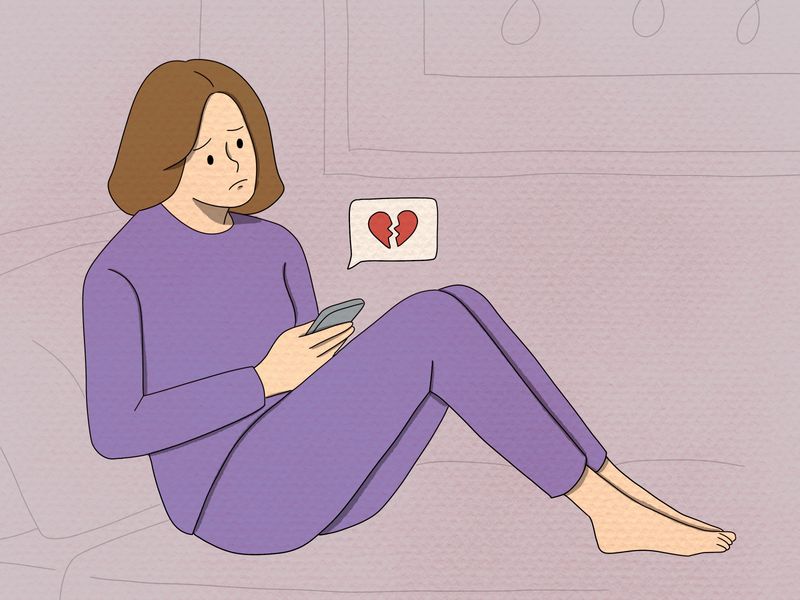18 Modern Dating Trends That Set The Stage For Relationship Failure
In today’s fast-paced world, the landscape of dating has undergone a significant transformation. While technology has brought us closer, it has also introduced a myriad of trends that may hinder genuine connection.
This blog explores 18 modern dating trends that are prevalent today but often lead to relational breakdowns. Each of these trends, though seemingly harmless or even attractive, quietly erodes the foundation needed for long-lasting relationships.
Let’s delve into these trends and understand why they are more of a hindrance than a help in the quest for enduring love.
1. Breadcrumbing that leads nowhere

Have you ever felt like a character in a digital fairy tale, following a trail that leads nowhere? Breadcrumbing can feel like an endless game where one person gives just enough attention to keep another interested.
The intention often lacks sincerity, as these small tokens of attention lead to false hope and heartache. The digital age has made it easier for breadcrumbing to occur, leaving many trapped in a cycle of anticipation and disappointment.
This trend leaves individuals questioning their worth and seeking validation in the wrong places. It’s a deceptive dance that often results in emotional exhaustion, as the chase for genuine connection becomes clouded by uncertainty and mixed signals.
2. Talking stages that never go anywhere

In the realm of modern dating, the “talking stage” has emerged as a phase filled with potential—yet often it leads nowhere. It’s a stage where individuals engage in conversation without commitment, leaving many in limbo.
This ambiguity can create a false sense of progress, as conversations may feel deep and meaningful, yet lack the crucial step forward. The allure of keeping options open often results in stagnation rather than connection.
In a world where communication is key, the talking stage can become a lullaby that soothes but never awakens. Individuals may find themselves stuck in endless cycles, where the illusion of closeness masks a void of actual development.
3. Relying on apps without actual effort

In a time where love seems just a swipe away, dating apps have revolutionized how connections are made. Yet, the convenience they offer can sometimes hinder authentic effort. Relying too heavily on these platforms can create a facade of connection without the depth required for a genuine relationship.
While apps simplify the process of meeting people, they can also promote superficial interactions over meaningful engagement. The ease of swiping might encourage a detachment, where individuals become profiles rather than people.
The comfort of digital convenience often replaces the courage needed to foster real connections. When effort is sidelined, the potential for building a lasting bond diminishes, leaving users feeling isolated despite endless options.
4. Situationships treated like clarity

In today’s dating scene, situationships have become an accepted norm, blurring the lines between friendship and commitment. These undefined relationships can feel comfortable yet often result in confusion and frustration.
The allure of a situationship lies in its flexibility, but this lack of definition often prevents true clarity. Without clear boundaries or commitments, these relationships can lead to emotional turmoil and a lack of direction.
While situationships may offer temporary satisfaction, they frequently fail to provide the stability needed for long-term success. This nebulous state can leave individuals feeling unfulfilled, as the search for clarity turns into a cycle of doubt and uncertainty.
5. “Soft ghosting” as a way to exit

In the era of digital communication, “soft ghosting” has emerged as an indirect way to exit relationships. Unlike traditional ghosting, this subtle form involves a gradual reduction in communication, leaving one party confused and seeking answers.
The appeal of soft ghosting lies in its perceived gentleness, yet it often amplifies feelings of rejection and inadequacy. This trend highlights a fear of confrontation and an avoidance of emotional accountability.
Though it may seem like a kinder choice, soft ghosting can inflict lasting emotional scars. The lack of closure leaves individuals suspended in a state of uncertainty, questioning what went wrong without ever getting a clear answer. It’s an exit strategy that leaves a trail of unresolved emotions.
6. Leading with looks, not values

In a world where appearances often take center stage, leading with looks instead of values has become a common dating trend. While physical attraction is important, overemphasizing it can overshadow the deeper qualities that sustain a relationship.
This trend can lead to connections based on superficial criteria, often resulting in a lack of genuine compatibility. When aesthetics are prioritized over shared values, relationships may begin with promise but falter as deeper issues arise.
The glamour of a physically attractive partnership may initially dazzle, yet without substance, it quickly loses its luster. Individuals may find themselves in partnerships that look great on the outside but lack the internal strength to weather life’s challenges.
7. Texting chemistry mistaken for compatibility

In the digital age, texting has become a primary mode of communication in relationships. However, the chemistry that blossoms over text can often be mistaken for true compatibility. While witty exchanges may spark initial interest, they sometimes mask deeper incompatibilities.
Relying solely on text-based interactions can create an illusion of closeness, where meaningful connection is confused with playful banter. It’s easy to curate a persona through text, leaving out the complexities of real-life interactions.
This trend can lead individuals to invest in relationships that seem promising in a digital space, yet falter when faced with the realities of in-person dynamics. The allure of texting chemistry often dissipates when tested by face-to-face encounters.
8. Avoiding real conflict in favor of “chill”

In the pursuit of maintaining peace, many modern daters avoid real conflict, opting instead for a “chill” demeanor. This trend, while seemingly harmless, can prevent the healthy resolution of issues that arise in any relationship.
The desire to keep things light and easy-going often leads to unresolved tensions that simmer beneath the surface. Over time, these ignored issues can erode the foundation of trust and understanding.
While staying “chill” might temporarily keep the peace, it often comes at the expense of genuine connection. The failure to address and work through conflicts can result in a relationship built on shaky ground, vulnerable to collapse as unspoken grievances accumulate.
9. Performing instead of connecting

In the age of social media and constant connectivity, the pressure to perform in relationships has intensified. Many find themselves caught up in the act of showcasing an idealized version of romance rather than fostering genuine connection.
This performance-driven approach can lead to relationships that look perfect to outsiders but lack true intimacy. The focus on appearances can overshadow the authentic interactions that nurture a deep bond.
The drive to perform often stems from societal expectations and the desire for validation. Yet, it can leave individuals feeling isolated, as the pursuit of perfection replaces the pursuit of genuine connection. When relationships become a stage, the authenticity needed for lasting love is often lost.
10. Confusing attention with interest

In a world where attention is currency, it’s easy to confuse being noticed with being valued. This trend can lead individuals to mistake fleeting attention for meaningful interest, resulting in misplaced hopes and expectations.
The allure of being in the spotlight can be intoxicating, yet without substance, it often fades quickly. Attention, while flattering, doesn’t always equate to the genuine interest needed for a lasting connection.
When attention is mistaken for interest, individuals may find themselves chasing validation rather than genuine connection. The temporary high of being noticed often leaves a void when true interest fails to materialize, highlighting the need for discerning between the two.
11. Dating multiple people with no direction

The freedom to date multiple people simultaneously has become a hallmark of modern dating, yet without clear intentions, it can lead to confusion and emotional burnout. This trend often promotes exploration without direction, leaving individuals unsure of their relational goals.
While variety can be exciting, it may also prevent the depth required for a meaningful relationship. The pursuit of potential partners without clear intent often results in superficial connections lacking in substance.
Dating without a clear path can feel liberating, but it often sacrifices the commitment needed for true intimacy. Individuals may find themselves caught in an endless cycle of beginnings, without the satisfaction of a true emotional connection.
12. Overvaluing aesthetic over depth

In an era where image often takes precedence, the overvaluation of aesthetics can overshadow the depth needed for a lasting relationship. This trend emphasizes the surface over the substantive, leading to connections that may look good but lack true depth.
While attraction plays a role in relationship dynamics, placing too much emphasis on aesthetics can result in shallow connections. The allure of a visually pleasing partnership may mask the absence of shared values and genuine understanding.
The focus on appearance often leads to relationships that are visually appealing but emotionally hollow. Individuals may find themselves in partnerships that satisfy societal standards but leave them yearning for a connection that resonates beyond the surface.
13. Disappearing after vulnerability

In the dance of intimacy, vulnerability is a crucial step, yet it often scares individuals into retreat. The trend of disappearing after sharing vulnerabilities leaves emotional wounds that can be difficult to heal.
Opening up requires courage, and when met with withdrawal, it can create a cycle of mistrust and fear. This trend underscores a widespread reluctance to engage with the complexities of emotional openness.
The fear of vulnerability can lead individuals to protect themselves by withdrawing just when a relationship has the potential to deepen. This retreat often results in a pattern where genuine connection is sacrificed for the safety of emotional distance, leaving relationships unfulfilled.
14. Calling it “low effort” instead of unavailable

The trend of labeling unavailability as “low effort” has taken root in modern dating, leading to misunderstandings and unmet expectations. This tendency allows individuals to avoid accountability by masking disinterest as a laid-back approach.
While a “low effort” demeanor may seem appealing in its simplicity, it often signifies a lack of investment in the relationship. This can lead to frustration as one partner may feel neglected or undervalued.
By disguising unavailability as a casual approach, individuals avoid addressing deeper issues that could foster real connection. This trend often leaves relationships stagnant and unfulfilling, as the lack of genuine engagement prevents meaningful progress.
15. Avoiding emotional accountability

Emotional accountability is key to sustaining healthy relationships, yet the trend of avoiding it is prevalent today. This avoidance can lead to a pattern where individuals refuse to own their emotions and actions, creating a cycle of blame and misunderstanding.
This trend often manifests as a reluctance to engage in meaningful discussions about feelings, resulting in unresolved conflicts and emotional distance. By shirking responsibility, individuals miss the opportunity to grow and deepen their connections.
The lack of emotional accountability can hinder the development of a relationship, as the absence of open communication prevents healing and understanding. It’s a barrier that often leads to stagnation, where relationships fail to thrive beyond superficial levels.
16. Saying “I’m not ready” but still seeking affection

In the quest for connection, the phrase “I’m not ready” has become a common refrain, yet it often hides a deeper fear of commitment. This trend can lead to mixed messages, where individuals seek affection without the readiness for a serious relationship.
The desire for companionship can conflict with an unwillingness to take things further, resulting in confusion and frustration for all involved. This ambivalence often prevents relationships from evolving into something meaningful.
While acknowledging one’s readiness is crucial, using it as a shield can hinder genuine connection. The pursuit of affection without commitment can leave individuals feeling unfulfilled, as the longing for closeness remains unmet by a true willingness to invest in the relationship.
17. Expecting long-term from short-term energy

In modern dating, the expectation of long-term commitment often clashes with the energy invested at the beginning. This trend manifests as a mismatch where individuals seek enduring relationships without putting in the necessary effort.
While the initial excitement can create a burst of energy, sustaining a relationship requires consistent investment and dedication. Expecting long-term results from short-term efforts often leads to disappointment and unmet expectations.
The allure of instant connection can overshadow the work needed to maintain it. This trend highlights a need for balance between initial attraction and the ongoing commitment required to build a lasting partnership. Without it, relationships rarely progress beyond the starting line.
18. Normalizing inconsistency as modern love

Inconsistency has become a hallmark of modern relationships, often normalized as part of the dating landscape. This trend allows unpredictability to masquerade as spontaneity, yet it often erodes trust and stability.
The romanticization of inconsistency can lead to relationships that are exciting yet unstable. Without reliability, the foundation of trust is weakened, leaving individuals unsure of where they stand.
By accepting inconsistency as normal, individuals may overlook red flags that indicate deeper issues. This trend often results in relationships that appear dynamic but lack the grounding needed for true intimacy. The acceptance of inconsistency can prevent relationships from maturing into secure and lasting partnerships.







